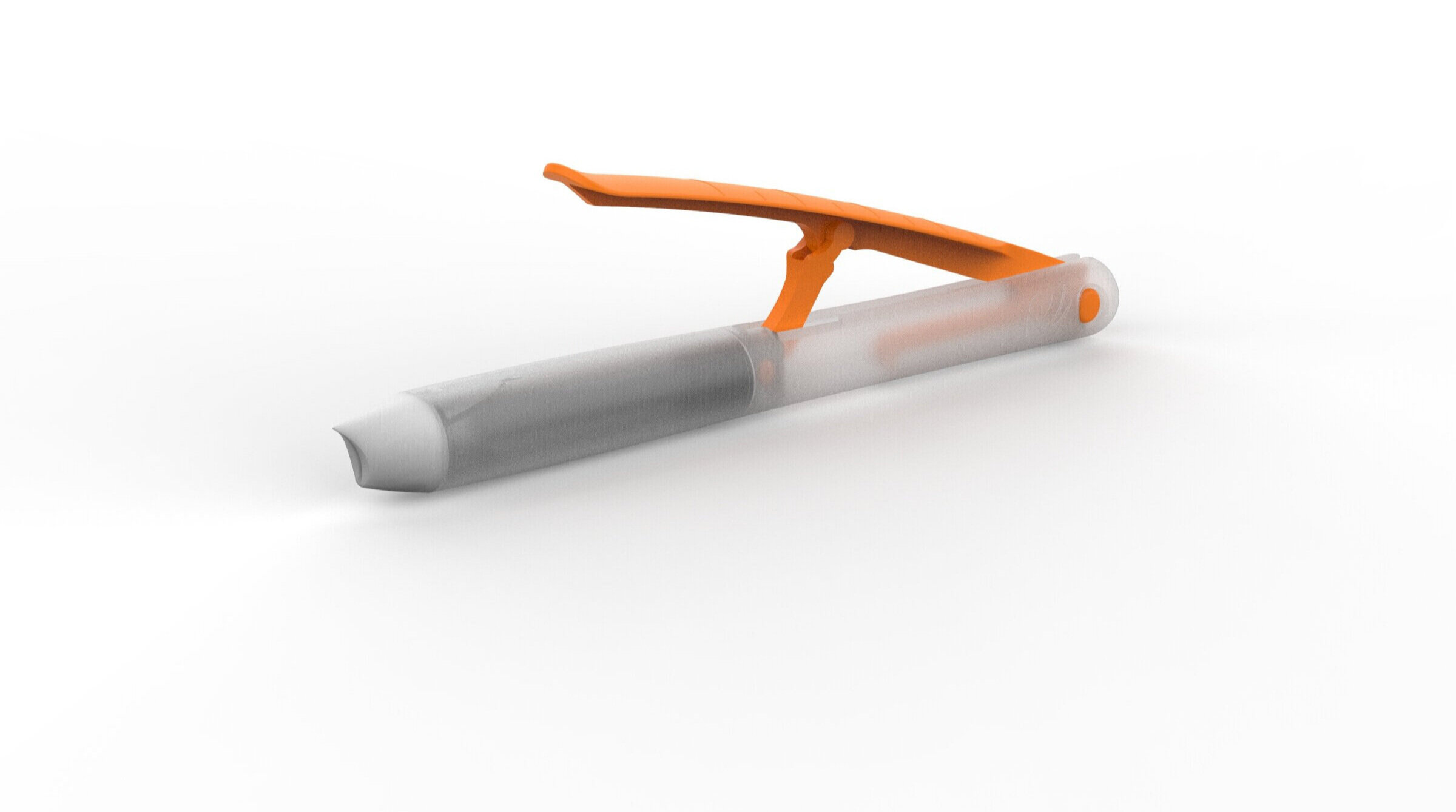
A one-handed, lever-actuated way to apply wound-closure adhesive
Resivant Medical
Tissue-Adhesive Applicator
Current tissue-adhesive applicators require surgeons to break and squeeze a glass ampule inside a tube to release and mix the adhesive, a difficult and unnerving user experience that also wastes adhesive. Resivant developed an intuitive alternative that enables surgeons to single-handedly depress a lever to break this ampule and smoothly dispense adhesive along the wound. But simplicity isn't simple—as a one-handed operation, the applicator's body had to be perfectly balanced and contoured to stay firmly planted in any surgeon's slippery hand. The actuation lever needed to provide optimal leverage and comfort while not blocking the surgeon's view of the wound. Through careful ergonomic studies and targeted design & engineering refinements, Humanfactors and Resivant developed a device that makes surgeons eager to pick it up and try it—the response so far has been overwhelming. Click here to learn more about Resivant and their proprietary Cutiva™ adhesive.

Industrial Design
Ergonomic Study
This is a small, plastic, cylindrical device used by gloved hands in a wet environment - grip stability is challenging. User studies revealed a preference towards one grip style, but it was imperative the device be effective using any approach - carefully studying all available device-contact points ensured the design would prove effective regardless of user preference. Features were explored to ensure users could keep a confident, sure-handed grip during use - bump-outs, textures, and the cylinder’s overall form were carefully combined to ensure stability.
Texture Study
On such a small device, every available inch counts for creating stability, comfort, and grip. The lever plays a key role in this respect, as the user is always applying to it some degree of force, which in turn helps secure the applicator-body within the rest of the hand. However, testing revealed that no matter the contour of the lever, surgical conditions (e.g. wetness) will slide the applicator right out of a gloved hand without a grippy texture to grab. A ruler was added to enable surgeons to measure the length of the adhesive.
Rapid Prototyping
A series of foam and 3D-printed models were fabricated throughout the design phase in order to ensure the ergonomic features were working correctly. The size, depth, and placement of a scallop on the body could mean the difference between a firm grip and botched enclosure.





